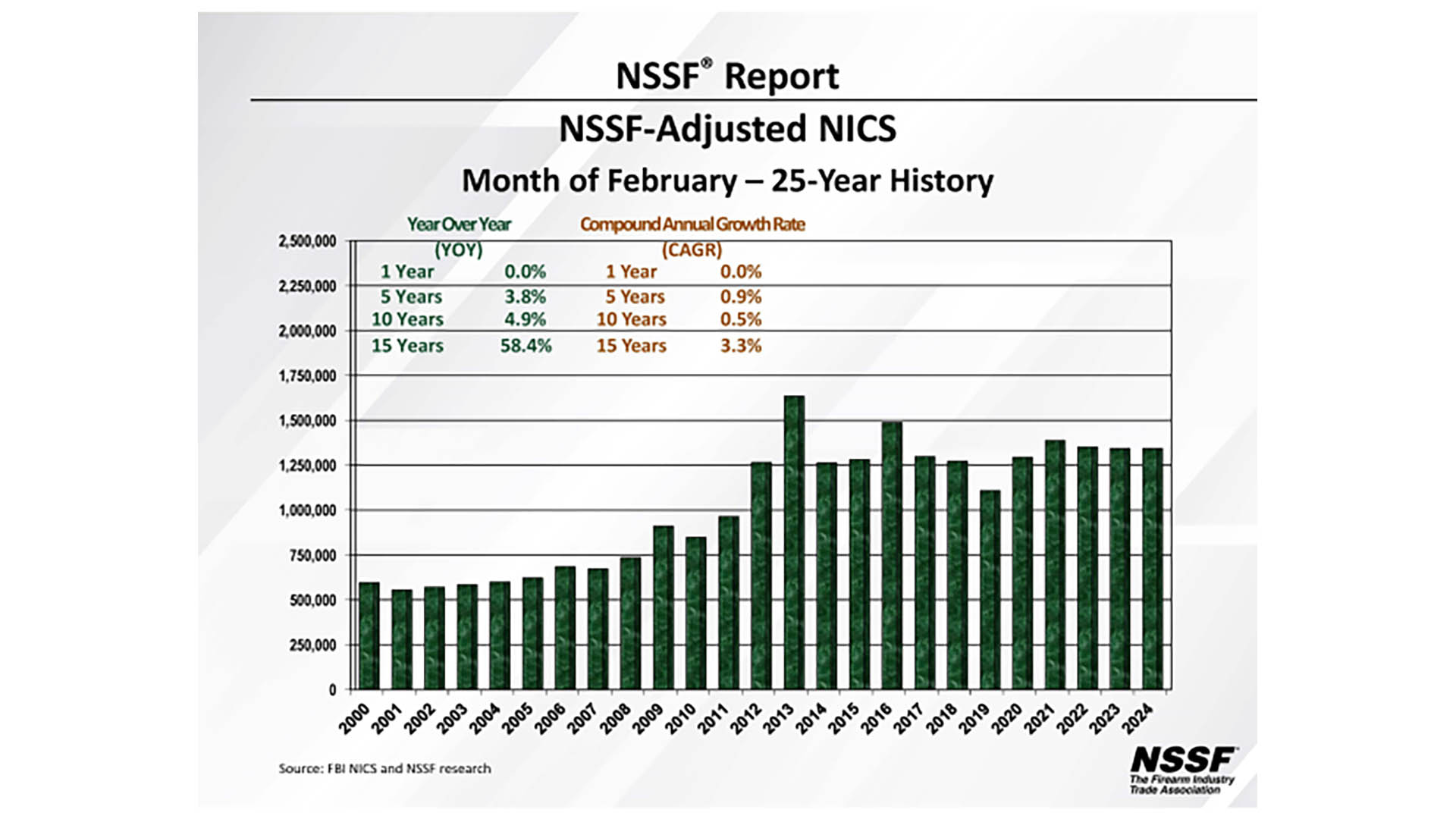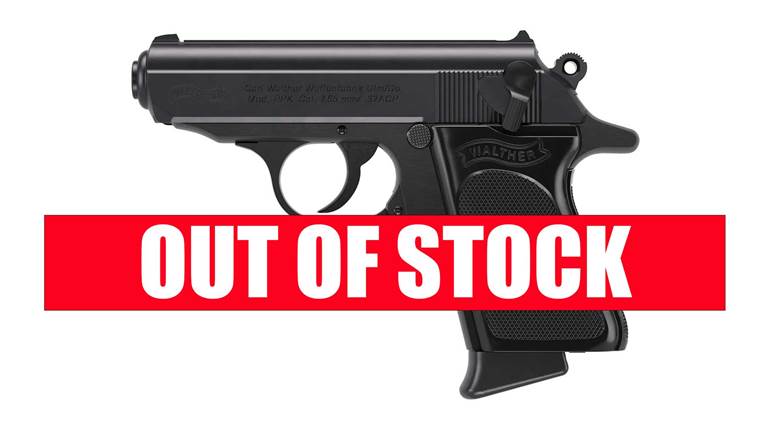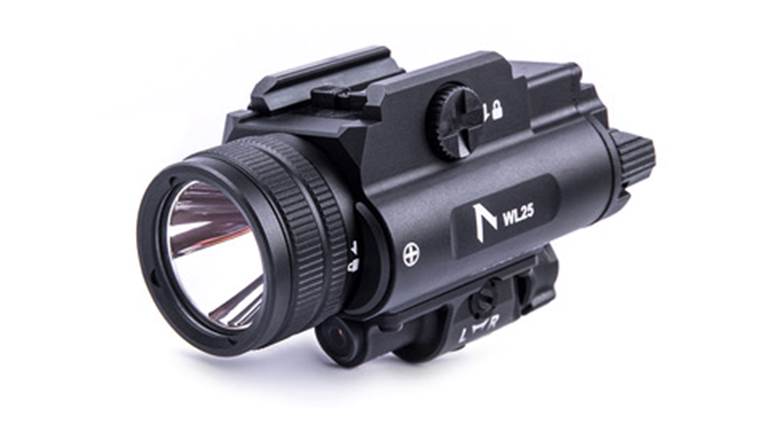
Heavy traffic at FFLs aside, buried in the National Shooting Sport Foundation (NSSF) estimates is another figure that indicates enthusiasts in the market for a new gun this year might consider shopping early. February’s number reflects a very small .01 percent decrease when compared to the same month in 2023. January, by comparison, experienced a 5.8 percent decrease (1.15 million guns sold). With a contentious presidential election on the horizon and political rhetoric on the rise, FFLs can expect an increase in demand and inventory challenges to develop as November approaches.
This year’s widened gap in sales between the two months likely endorses the shift. February 2024 firearm sales—again, as reflected through NICS background checks—came in at roughly 190,000 more than January. February 2023 also experienced an increase over the month before, but it was less than half of this year’s number—roughly 90,000.
It’s also important to note the that total firearm sales estimates above are lower than the actual number of purchases. Twenty-four states have at least one qualified alternative permit that allows a permit-holder—who has already undergone a background check to obtain the permit—to purchase a firearm from a licensed dealer without a separate additional background check. Reported NICS checks in these states do not reflect these legal transfers, and NSSF figures are not adjusted for these transfers in nearly half of the nation.
For that reason, data based on adjusted NICS volume is considered a relative barometer of industry health and current market conditions. NICS is used for a variety of purposes—not just gun sale approvals—including clearances for carry permits, their renewal, administrative functions and other law enforcement functions.

















![Winchester Comm[94]](/media/1mleusmd/winchester-comm-94.jpg?anchor=center&mode=crop&width=770&height=430&rnd=134090756537800000&quality=60)
![Winchester Comm[94]](/media/1mleusmd/winchester-comm-94.jpg?anchor=center&mode=crop&width=150&height=150&rnd=134090756537800000&quality=60)

















